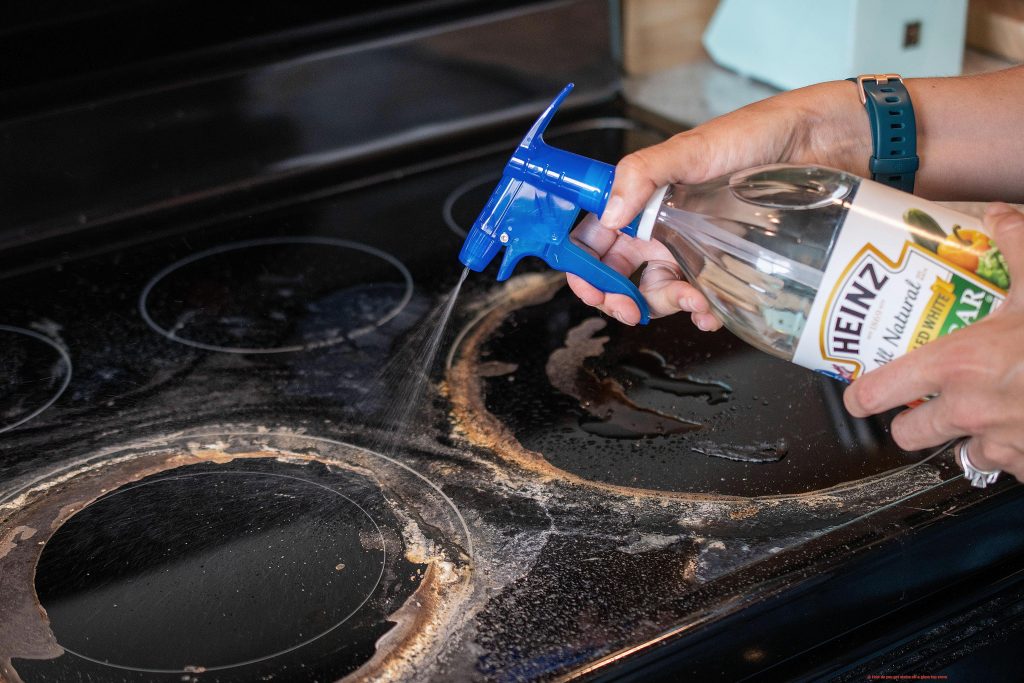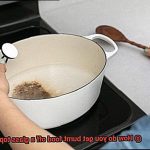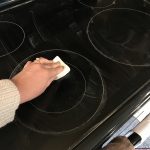Do you dread cleaning your glass top stove because of those pesky stains that just won’t budge? Are you tired of scrubbing endlessly with no results to show for it? Fear not, my friend. In this post, we’ll explore some of the most effective methods for banishing those stubborn stains from your glass top stove.
Glass top stoves add a touch of elegance and modernity to any kitchen. However, they require special care and attention to maintain their pristine appearance. Unlike traditional stovetops, glass top stoves are susceptible to scratches and damage if not handled properly.
Stains on a glass top stove can come in many forms – from grease and burnt food to hard water spots. But don’t worry, there’s no need to throw in the towel just yet. With a few simple and affordable techniques, you can restore your stove’s shine in no time.
In this post, we’ll cover the best methods for removing stains from your glass top stove – including tried-and-true remedies like baking soda and vinegar, as well as specialized cleaning tools. So let’s roll up our sleeves and bid farewell to those pesky stains once and for all.
Contents
Types of Stains on Glass Top Stoves
Glass top stoves are a modern and stylish addition to any kitchen. However, they require special care to maintain their gleaming appearance. The most common challenge homeowners face with glass top stoves is dealing with unsightly stains. These stains can come from various sources, including water, food, grease, or heat. Understanding the different types of stains and how to remove them is crucial in keeping your glass top stove looking new.
Water spots are one of the most frequent types of stains on glass top stoves. These spots are caused by hard water that leaves mineral deposits on the surface of the stove. If left untreated, water spots can be difficult to remove and make your stove look dirty even when it’s spotless. Using a mixture of vinegar and water or lemon juice and water is effective in removing water spots. Apply the solution to the stain and let it sit for a few minutes before wiping it away with a soft cloth.
Grease stains are another common issue with glass top stoves. Cooking oils or fats that splatter onto the stove and then harden over time cause these stains. Grease stains can accumulate over time and become challenging to remove if left untreated. To remove grease stains, you can use a degreaser or a mixture of dish soap and warm water. Apply the solution to the stain and let it sit for a few minutes before wiping it away with a soft cloth.
Food residue is another type of stain that can accumulate on glass top stoves and make them look unsightly. Sugary or starchy foods tend to stick to the surface of the stove and build up over time, making them hard to remove. A mixture of baking soda and water can create a paste that effectively removes food residue. Apply the paste to the stain and let it sit for a few minutes before wiping it away with a soft cloth.
Heat stains are another issue that can be difficult to remove from glass top stoves. Hot pots or pans placed directly on the stove can cause these stains. Heat stains can penetrate deep into the glass surface of the stove, making them challenging to remove. A specialized glass top stove cleaner is effective in removing heat stains.
In conclusion, maintaining the appearance of your glass top stove requires extra effort. Understanding the different types of stains that can occur and how to remove them is essential in keeping your stove looking new. Using gentle cleaning methods and avoiding harsh chemicals or abrasive materials is crucial in preventing damage to the surface of the stove.
Cleaning Burnt-on Food Stains
If you’re an avid cook, you may have experienced the frustration of burnt-on food stains on your glass top stove. But fear not, as there are effective methods to tackle this issue. As an expert in cleaning burnt-on food stains, I have compiled some foolproof methods that will leave your glass top stove looking clean and shiny.
First up, the baking soda and vinegar method. This is a simple yet effective way to clean burnt-on food stains from your glass top stove. Sprinkle baking soda over the stain and then spray vinegar over it. Let the mixture sit for about 10 minutes and then scrub the stain with a soft-bristled brush. The chemical reaction between the two ingredients works like magic.
Another method that works wonders is using a razor blade scraper. Hold the scraper at a 45-degree angle and gently scrape off the burnt-on food residue. Make sure to use a new blade to avoid scratching the glass surface. Once you have removed the burnt-on food residue, wipe the surface with a damp cloth.
If you don’t want to go the DIY route, commercial glass stove-top cleaners are also available. These cleaners are specially formulated to remove stubborn stains from glass stove tops without damaging the surface. Simply apply the cleaner on the burnt-on food stain and let it sit for a few minutes before wiping it off with a damp cloth.
Prevention is key when it comes to burnt-on food stains on your glass top stove. Regularly wiping down the surface with a damp cloth after every use and using a non-abrasive cleaner regularly can prevent these stains from forming in the first place.
In addition to these methods, here are some tips for maintaining a clean and shiny glass top stove:
- Use a soft-bristled brush or sponge to avoid scratching the surface
- Avoid using harsh chemicals or abrasive materials that can damage the glass
- Use a microfiber cloth to polish the surface after cleaning
Cleaning Hard Water Stains
These white, crusty deposits can be caused by the buildup of minerals like calcium and magnesium, affecting not only the appearance but also the performance of your stove. Fear not, as I am an expert in cleaning hard water stains and have compiled a list of effective methods to restore your stove’s shine and efficiency.
The easiest and most effective method is to use a vinegar and water solution. Mix equal parts white vinegar and water in a spray bottle, apply the solution onto the affected areas of your stove, wait a few minutes, and wipe it away with a soft cloth or sponge. It’s that simple.
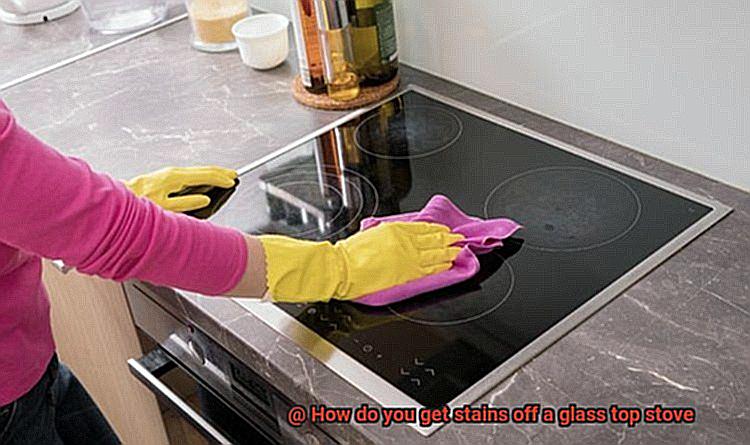
If you prefer commercial cleaners, look for ones specifically designed for removing hard water stains. These cleaners typically contain mild abrasives that can scrub away stubborn stains without damaging your stove. They are available at most hardware stores or online.
For those who prefer a more natural approach, try using baking soda and lemon juice. Mix equal parts baking soda and lemon juice to form a paste, apply it to the affected areas of your stove, allow it to sit for several minutes before scrubbing it away with a soft cloth or sponge.
However, when cleaning hard water stains from your glass top stove, it’s crucial to avoid using abrasive sponges or scrubbers that can scratch the surface. Opt for soft cloths or sponges instead and rinse your stove thoroughly after cleaning to remove any residue.
Avoiding Damage to the Glass Surface
Fear not, my friend. As an expert in avoiding damage to the glass surface, I’m here to share some valuable tips to keep your stove top looking as good as new.
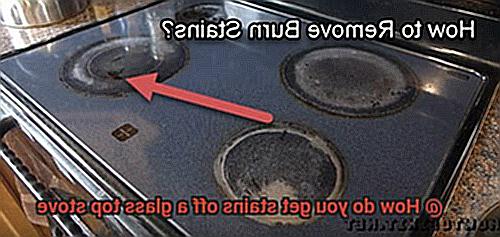
First and foremost, avoid using abrasive materials or cleaning tools that can scratch the surface. Instead, opt for soft cloths or sponges and non-abrasive cleaning solutions. Vinegar and water solutions, baking soda and water pastes, or specially formulated glass stove top cleaners are all great options that won’t cause any damage.
Heat is another critical factor to consider. While glass stove tops are designed to handle high temperatures, sudden changes in temperature can cause cracking or other forms of damage. To avoid this, always let the stove top cool down completely before cleaning it and avoid placing hot pots or pans directly onto its surface.
Regular cleaning is key to preventing buildup of dirt and grime that can become increasingly difficult to remove over time. A quick wipe-down with your preferred cleaning solution after each use should be sufficient.
So, here are some top tips for avoiding damage to your glass stove top:
- Use only soft cloths or sponges and non-abrasive cleaning solutions
- Wait for the stove top to cool down completely before cleaning it
- Avoid placing hot pots or pans directly onto the surface
- Regularly clean your stove top to prevent buildup of dirt and grime
Clean Up Spills Quickly
Neglecting spills can lead to unsightly stains and baked-on messes that can damage the surface of your beloved stove.
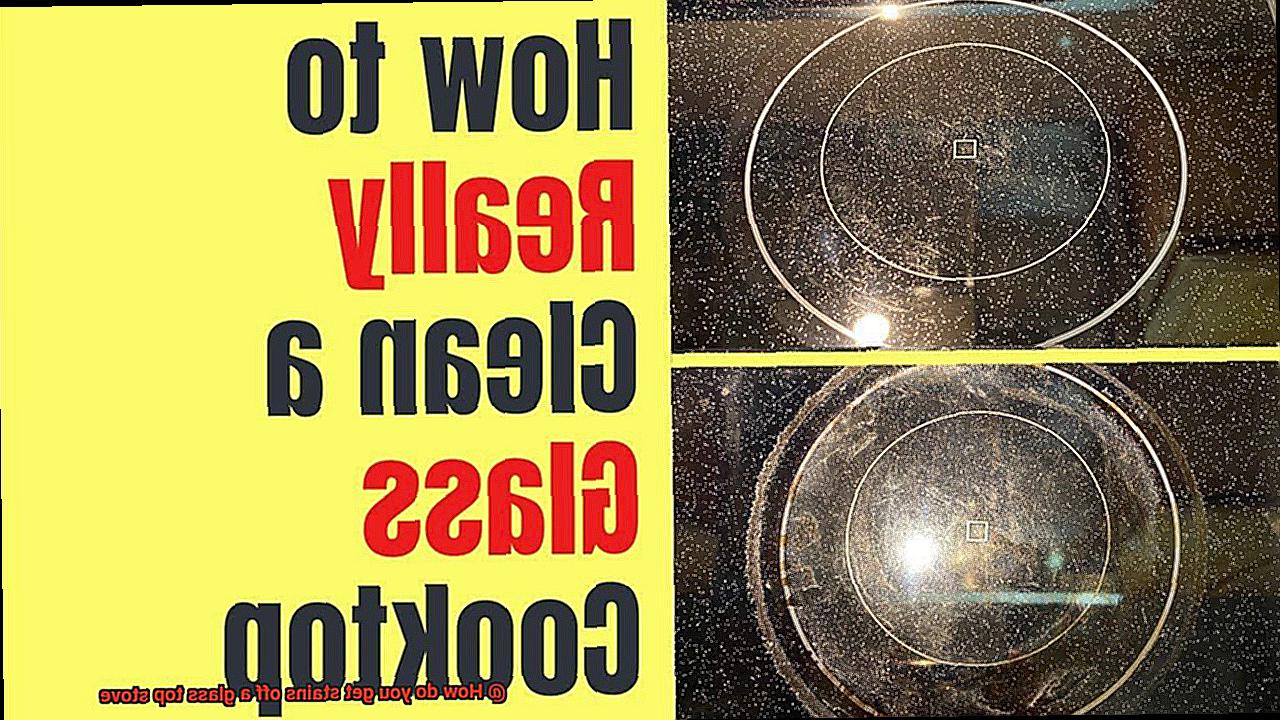
To start with, you need the right tools for the job. Keep a soft cloth or sponge and a gentle cleaning solution that specifically caters to glass surfaces within easy reach. Avoid using harsh chemicals or abrasive scrubbers that can leave scratches and damage your stove.
When a spill occurs, turn off the heat immediately and let the surface cool down before cleaning. This prevents further damage and makes cleaning a lot easier. Once it’s cooled down, use your soft cloth or sponge to gently wipe away any excess liquid or debris.
Don’t let any spills sit for too long, as they can become stubborn over time. Ensure that you clean them up quickly and efficiently to avoid any permanent damage to your stove.
In case of stubborn stains, don’t despair. A mixture of baking soda and water creates an effective cleaning paste that is gentle on your glass top stove. Apply the paste to the stained area and let it sit for a few minutes before gently scrubbing with a soft brush or cloth. Rinse thoroughly with water and dry with a clean towel.
Tips for Maintaining a Clean Glass Top Stove
Maintaining a clean glass top stove is essential for safety, efficiency, and aesthetics. However, with constant use, it’s easy for your stove to become dirty and stained. Here are five tips to help you maintain a clean glass top stove:
Immediate spill cleanup
Spills can harden quickly on a hot stove and become stubborn stains that are difficult to remove. Therefore, it’s crucial to clean up spills immediately with a soft cloth or sponge and mild soap and water.
Use appropriate cleaning products
Using abrasive cleaners or scrubbers can scratch the surface of the stove, making it more difficult to clean in the future. Instead, use a specialized cleaner formulated for glass top stoves or a mixture of vinegar and water.
Handle with care
Cleaning your stove requires gentle pressure and avoiding scraping or scrubbing too hard. Using soft-bristled brushes or sponges will prevent damage to the surface of the stove.
Regular maintenance
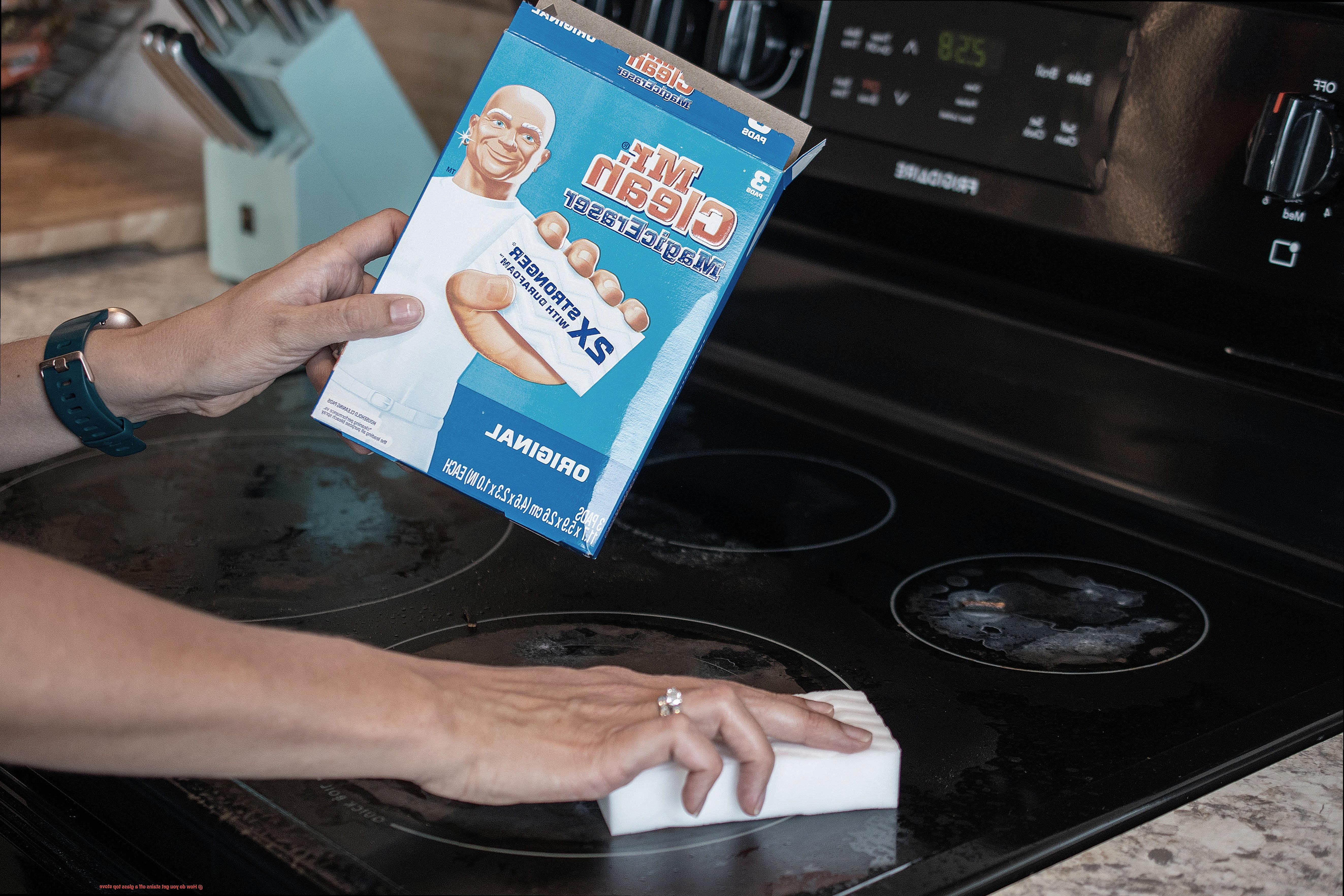
To prevent buildup and stains from becoming impossible to remove, aim to clean your stove at least once a week, especially if you use it frequently.
Protective covers
Heavy cookware or pots with rough bottoms can scratch and stain your glass top stove. Therefore, using a protective cover or cooktop protector is essential for maintaining its shiny appearance and preventing damage.
Different Cleaning Products Available
Fear not, for there are several cleaning products available in the market that can effectively clean your stove without causing any damage. Let’s explore the different types of cleaning products available for your glass top stove.
First up, specialized cleaners designed for glass top stoves are a popular choice. These cleaners are specifically formulated to remove tough stains and burnt-on food without scratching or damaging the surface. They come in a handy spray bottle, making them easy to use.
For those who prefer natural cleaning products, baking soda is an excellent option. As a natural abrasive, it can effectively remove grime and stains without leaving any scratches. Simply mix baking soda with water to form a thick paste and apply it to the stained area. Leave it for a few minutes before wiping it off with a damp cloth.
Vinegar is another natural cleaning product that is great for removing stubborn stains and grease from your glass top stove. Mix equal parts of white vinegar and water in a spray bottle and spray it onto the affected area. Allow it to sit for a few minutes before wiping it off with a damp cloth.
If you have commercially available stainless steel cleaners at home, they work well on glass top stoves too. These cleaners contain mild abrasives that can effectively remove burnt-on food and stains without damaging the surface.
It is crucial to choose the right cleaning product based on the type of stain or grime on your stove, so always follow the manufacturer’s instructions when using any cleaning product. Avoid using harsh chemicals or abrasive materials that can damage the surface of your stove.
J15Y5w-RHec” >
Conclusion
In conclusion, a glass top stove is a beautiful addition to any kitchen, but it requires special care and attention to maintain its pristine appearance. Stains on the surface can come in many forms, from water spots to grease stains, food residue, and heat stains. However, fear not. With a few simple and affordable techniques, you can restore your stove’s shine in no time.
Understanding the different types of stains that can occur and how to remove them is essential in keeping your stove looking new. To prevent damage to the surface of the stove, it’s crucial to use gentle cleaning methods and avoid harsh chemicals or abrasive materials. Regular cleaning is key to preventing buildup of dirt and grime that can become increasingly difficult to remove over time.
To maintain a clean glass top stove, it’s essential to use appropriate cleaning products such as specialized cleaners designed for glass top stoves, baking soda, vinegar or commercially available stainless steel cleaners. Handle the stove with care by using soft-bristled brushes or sponges and avoiding scraping or scrubbing too hard. Trust us; this will save you from unwanted scratches.
In summary, keeping your glass top stove looking as good as new for years to come requires some effort but is entirely worth it. With these tips and tricks at your disposal, you’ll be able to tackle any stain that comes your way with ease.

